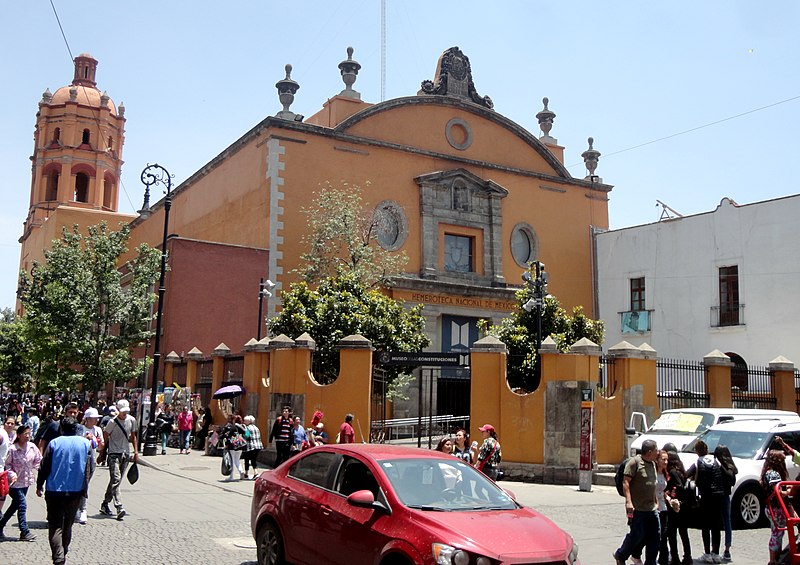
难以置信的是,宪法博物馆坐落在圣佩德罗和圣保罗教堂的教堂和寺庙内,由墨西哥国立自治大学(UNAM)管理。这是一个致力于墨西哥建立和维护宪政体制的漫长历程的博物馆。
对于国际游客来说,这可能听起来像是很多法律术语。但这个场所如此振奋人心的地方在于,宏伟的建筑设计,使参观的过程变得启发人心。同一位圣人的附近学校,设有光之博物馆。许多游客会合并参观这两个地方。
建筑特色
圣佩德罗和圣保罗学院由耶稣会士于1574年创立。最初,圣佩德罗和圣保罗学院(Colegio Máximo de San Pedro y San Pablo),其中的“马克思摩”指的是它培训神职人员的角色。工人们从1576年开始铺设石头。一位名叫迭戈·洛佩斯·德·阿巴伊索(Diego Lopez de Arbaizo)的耶稣会建筑师,在1576年至1603年之间,建造了这座教堂。整个复杂建筑在1645年前后完工。这座博物馆完全位于教堂建筑内,多年来曾多次用于不同用途。
在三块彩色玻璃窗玻璃上,有两块是由罗贝托·蒙特内格罗(Roberto Montenegro)设计的。其中《鹦鹉卖家》和《瓜达拉哈拉的哈拉贝舞》备受喜爱。第三块展示了旧大学的印章。
教堂的正面采用了巴洛克和新古典主义风格,门廊两侧有两对多立克柱。上面的壁龛内放置着雅典娜的雕像 。教堂呈拉丁十字形状,内部有支撑结构。
建筑群的历史
到了18世纪中期,学院已经有大约800名学生入学,其中许多人接受了纯粹世俗职业的培训。然而,1767年,耶稣会士被驱逐出墨西哥,学院完全关闭。耶稣会士在1816年回归,正值独立战争的高潮期。整个建筑群基本上已经破败不堪。
当墨西哥在1821年终于赢得独立时,教堂建筑被用来举行宪法大会的会议。他们在1824年完成了第一部墨西哥联邦宪法。第一位总统的宣誓也在这里举行。
随后,教堂在1832年至1850年期间用作天主教堂,之后成为了一座图书馆。直到19世纪末,它开放给不同产业的商家承租。最终,它于1927年重新开放,成为“激辩交谊厅”。墨西哥教育部长何塞·瓦斯孔塞洛斯在翻修和改造方面采取了大胆的举措。在这个时期,一些早期现代派画家如哈维尔·格雷罗(Xavier Guerrero)和罗贝托·蒙特内格罗(Roberto Montenegro)的壁画被採用。
罗贝托·蒙特内格罗的壁画《生命之树》(也常称为“科学之树”)至今仍然存在。它被广泛认为是墨西哥现代绘画的第一幅壁画。在2010年进行了修复后,它成为了新的墨西哥宪法博物馆开馆的中心展品。
后来,它完全被融入了墨西哥国立自治大学(UNAM),并被用于各种不同的用途。在1944年,它成为了国家期刊档案馆(Hemeroteca Nacional),一直保持到1979年。最初,光之博物馆也设在这座建筑内,但后来为了将其用作宪法博物馆,进行了搬迁。
博物馆的九个主题区域,详细解释了从 1808 年到 1917 年宪法的克里奥尔运动。一项永久性展览展示了每个文件的社会和政治背景。
此外,您可以在这里参观博物馆深度的虚拟导览。
 The first Jesuit institution in the Viceroyal capital came to be with important help from Alonso de Villaseca. It was the largest Jesuit educational building in the city. Over time, it became the most specialized and modern of Jesuit schools. It completed the formation of Jesuit novices and taught in indigenous languages with a generous endowment for its own maintenance. The temple eventually became one of the richest and most luxurious of New Spain, but nothing remained of it after the expulsion of the Jesuits in 1767.
The temple later served as a debate hall for the first Mexican Constitutional Congress. It thus became the site of the promulgation of the first constitution. Later, the facilities were used as a national newspaper library and science museum. Today it preserves one of the first works of Mexican muralism, the murals, sculptures, tiles and stained glass windows of a team headed by Roberto Montenegro and made between 1922 and 1930.
The first Jesuit institution in the Viceroyal capital came to be with important help from Alonso de Villaseca. It was the largest Jesuit educational building in the city. Over time, it became the most specialized and modern of Jesuit schools. It completed the formation of Jesuit novices and taught in indigenous languages with a generous endowment for its own maintenance. The temple eventually became one of the richest and most luxurious of New Spain, but nothing remained of it after the expulsion of the Jesuits in 1767.
The temple later served as a debate hall for the first Mexican Constitutional Congress. It thus became the site of the promulgation of the first constitution. Later, the facilities were used as a national newspaper library and science museum. Today it preserves one of the first works of Mexican muralism, the murals, sculptures, tiles and stained glass windows of a team headed by Roberto Montenegro and made between 1922 and 1930.
Heart of México Walking Route: Loreto-San Ildefonso Route
< < Mercado AbelardoL. Rodríguez | Colegio de San Ildefonso > >
Proyecto “Corredor de Cultura Digital”.
Nombre de la investigación: Investigación Centro Histórico, Monumentos, Edificios y Puntos de Interés (2023)
Dirección de investigación y diseño de Rutas: Acércate al Centro A.C. Guadalupe Gómez Collada
Coordinación e investigación histórica: Fideicomiso del Centro histórico Dir. Maestra Loredana Montes
 museoconstituciones@gmail.com
museoconstituciones@gmail.com
 +52 (55) 5702 9815
+52 (55) 5702 9815
 http://museodelasconstituciones.unam.mx/nuevaweb/
http://museodelasconstituciones.unam.mx/nuevaweb/
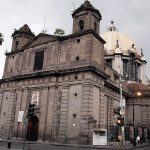
相近 0.06 kms.
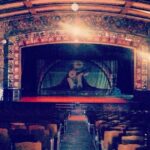
相近 0.07 kms.
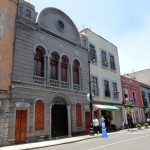
Mexico City's historic and first-recognized Jewish temple . . .
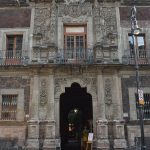
A modern graphic collection in an outstanding Baroque palace from the 18th century.
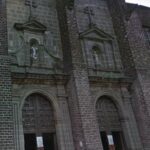
A striking Baroque work by Pedro de Arrieta stands the test of time.
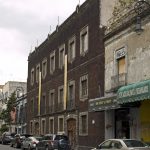
One of Mexico City's earliest temples is today a cultural center and museum.

One of the most striking Neoclassical churches in the city center, the Church of Nuestra Señora de Loreto is also one of the most crooked.